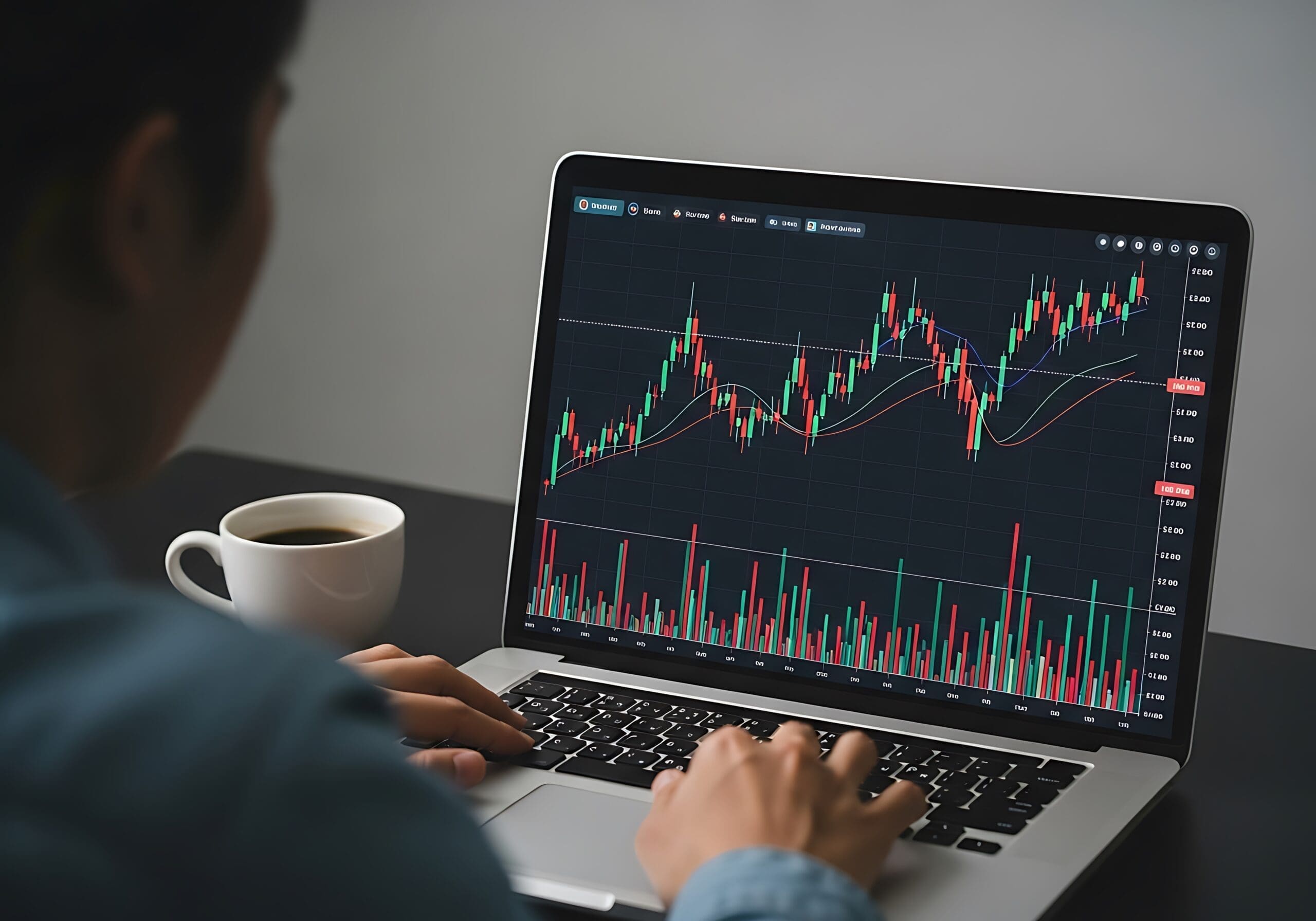What Is Insider Trading? A Complete Glossary for Traders and Investors
Ever wonder how some traders spot winning stocks before anyone else? Understanding insider trading —the legal buying and selling of company stock by executives and key shareholders—can help you see which trades matter.
This glossary is designed for traders and investors like you. It breaks down insider trading terms, order types, and market concepts into clear, actionable explanations. By the end, you’ll know the key terms and how to use them to make smarter, data-backed trading decisions.
Core Insider Trading Terms
Behind every insider trade is a signal about how the people running a company view its future. By learning the key terms, you’ll be able to decode these signals, understand what insider activity means, and use that knowledge to make smarter trading decisions.
Here are the most important insider trading terms you need to know:
- Insider Trading – When company executives, directors, or major shareholders buy or sell stock in their company. It’s legal if they follow SEC rules and disclose their trades, but illegal if they use secret, non-public information.
- Form 4 Filing – A report insiders must file with the SEC within two business days of buying or selling stock. You can track this document to see exactly what insiders are doing.
- 10b5-1 Trading Plan – A pre-scheduled plan insiders set up to buy or sell shares at specific times. The plan protects them from accusations of unfair trading, as it is created before they have access to new information.
- Section 16 Insider – Refers to top company leaders (directors, officers) and big shareholders (owning more than 10%). They have stricter reporting rules to keep their trades transparent.
- Short-Swing Profit Rule – Prevents insiders from making a quick profit. If they buy and sell their company’s stock within six months, they must return any profits to the company.
- Material Nonpublic Information (MNPI) – Information not yet made public but likely to affect a stock’s price (like earnings surprises or mergers). Trading on MNPI is illegal.
- Trading Window – A specific time when insiders are allowed to trade company stock, usually after earnings reports, when the risk of having undisclosed information is lower.

Order Types (Essential for Day Traders)
Placing the correct order can mean the difference between a smooth trade and an unnecessary loss. Understanding your options can help you manage risk, safeguard profits, and enter or exit the market more effectively.
Here are the most common order types:
- Market Order – Instantly buys or sells a stock at the best available price. It is fast, but you may not always get the exact price you hoped for.
- Limit Order – Lets you set the price you’re willing to pay (or accept). The trade only occurs if the market reaches your price.
- Stop Order (Stop-Loss) – Protects you from big losses. It becomes a market order once the stock price drops to your set price.
- Stop-Limit Order – Similar to a stop order, but instead of selling at any price, it becomes a limit order. This gives you more price control but risks not executing if the stock moves too quickly.
- Market on Open (MOO) – Executes your order right at the opening bell. Useful if you want to catch early momentum.
- Market on Close (MOC) – Executes near the market close. Suitable for locking in the day’s final price.
- Trailing Stop Order – This order follows the stock as it rises, locking in profits while giving the trade room to grow. If the stock price reverses by your set amount, it will sell automatically.
- Fill or Kill (FOK) – Either your entire order is filled immediately, or it’s canceled on the spot. Useful when you don’t want partial fills.
- Good ‘Til Canceled (GTC) – Your order stays active until it’s executed or you cancel it, even if that takes days or weeks.
- All or None (AON) – Similar to FOK but without the “immediate” requirement. Your order must be filled, even if it takes time.
Day Trading and Market Mechanics
To trade confidently and to answer the question “What is insider trading?” you need to understand how the market itself works. These terms explain the forces that affect every buy and sell decision, helping you manage risk and avoid surprises.

- Margin – Money you borrow from your broker to trade. It lets you control more shares than your cash balance alone, but it also increases your potential gains and losses.
- Leverage – Like margin, leverage means using borrowed money or financial tools to control a bigger position than you could with just your funds. It can magnify profits, but it can just as easily magnify losses.
- Liquidity – How easily you can buy or sell a stock without changing its price too much. Highly traded stocks like Apple are very liquid; smaller, less-traded stocks may be harder to enter or exit.
- Volatility – How much a stock’s price moves up and down. A highly volatile stock can swing wildly in a single day, creating opportunities, but also increasing risk.
- Bid-Ask Spread – The gap between what buyers are willing to pay (bid) and what sellers want (ask). A narrow spread typically indicates greater liquidity and lower trading costs.
- Slippage – When your trade executes at a different price than you expected, often because the market is moving quickly. Common in fast or volatile markets.
- Circuit Breaker – A temporary pause in trading on an exchange if prices drop too quickly. It’s meant to slow panic selling and stabilize markets.
Broader Investment Terms
Beyond insider trading and day-to-day market moves, there are core investing concepts that every trader should understand. These terms will help you evaluate stocks, compare opportunities, and build confidence in your overall strategy.
- Blue-Chip Stock – Shares of big, stable companies with a long history of strong performance (think Apple, Coca-Cola, or Microsoft). They’re generally considered safer investments.
- ETF (Exchange-Traded Fund) – A bundle of stocks or assets you can trade like a single stock. ETFs make investing in entire sectors, indexes, or themes easy, eliminating the need to buy each stock individually.
- Options Contract – A trading tool that gives you the right (but not the obligation) to buy (call) or sell (put) a stock at a set price before a specific date. Options allow for flexible strategies but come with higher risk if misused.
- Short Selling – Borrowing shares and selling them immediately, to buy them back later at a lower price. If the stock drops, you profit; if it rises, you incur a loss.
- Alpha – A measure of how well a stock (or your portfolio) performs compared to the overall market. A positive alpha indicates that it’s outperforming its benchmark.
Beta – Shows how much a stock tends to move compared to the market. A beta of 1 moves in line with the market; a beta higher than 1 means the investment is more volatile, and a beta less than 1 means it is more stable.
Dividend Yield – Tells you how much cash you earn from dividends compared to the stock’s price. It is helpful for judging income-generating stocks.
Market Capitalization (Market Cap) – The total value of all a company’s shares. It indicates the company’s size, categorized as small-cap, mid-cap, or large-cap.
P/E Ratio (Price-to-Earnings) – A quick way to see if a stock might be overpriced or undervalued by comparing its price to its earnings.
How Insider Trading Alerts Can Help You
Keeping up with insider trading on your own takes time—digging through SEC filings, figuring out which trades matter, and then trying to act before the market moves. That’s where Insider Trading Alerts comes in. We do the research and selection for you, sending curated insights straight to your inbox.
Here’s what you’ll get as a subscriber:
- Daily emails with a ranked list of insider stock purchases most worth paying attention to.
- Focus on real insider buys (not stock options or automated plans), highlighting only the trades that matter.
- Historical performance insights showing how similar insider trades affected stock prices in the past.
- Weekly recap of top trades to help you track the strongest opportunities.
- Affordable access at just $49.95/month, with no hidden fees or complicated plans.
Combining the insider trading terms you’ve learned with our daily curated picks and weekly recap allows you to make faster, smarter trades without spending hours buried in research.

Ready to Invest Smarter with Insider Insights and Stop Asking What is Insider Trading?
You’ve learned the basics of what insider trading is and why it matters. Now it’s time to take the next step—using curated insider activity to guide your trades. With Insider Trading Alerts, you’ll know which stocks company leaders are buying, backed by data and delivered straight to your inbox before the market opens.
Stop spending hours searching through SEC filings. Start making smarter, faster trading decisions with daily curated picks and a weekly recap you can trust.
Join today for just $49.95/month.

